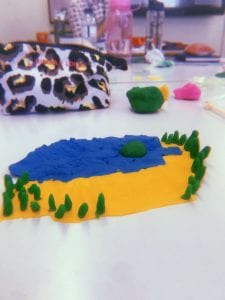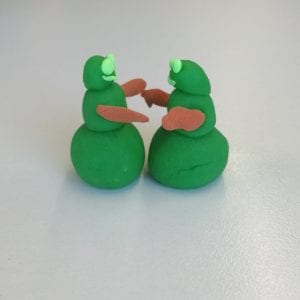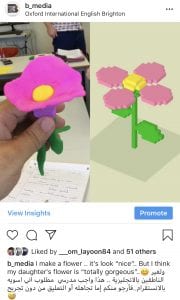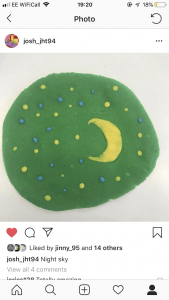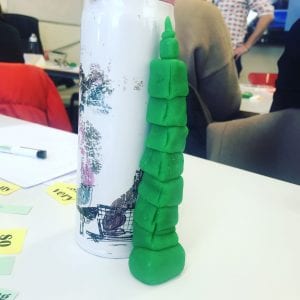Assessed Observation 2 : Unflattening
Observer: Paul Slater
Date: 8/3/2019
Time: 11.00am-12.00pm
Level: Upper-intermediate
Lesson plan: Lesson Observation 2
Pre-observation
My first step was to see what was due to be taught on the day of the observation. The topic in the course book was adverb collocations and extreme adjectives. The material included listening activities. In addition, there was a reading entitled ‘A night at the Oscars’ accompanied by a photograph of a glitzy couple, cameras flashing all around.
As you get to know your students you become attuned to there needs and characters. I felt that in order for this lesson to be relevant and relatable then adaption and supplementation was essential. How would I feel being taught this lesson which was aspirational and bore no relation to my life? I reflected on these issues and decided I wanted to ensure the experience was meaningful for the learners and to be brutally honest, more enjoyable for myself.
Rather than going for a tea i decided to simply observe the students during break time in our classroom during the week prior to the observation. Every single student was on Instagram. They did not appear to be using much of their own language or English. I then logged on to Instagram and found myself just pressing like, like, like. Surely this could be turned into an opportunity for the students to increase their productive written skills.
I believed that the target language of adverbs and gradable/ungradable adjectives was worth focusing and expanding on. So i looked at the first 100 posts on Instagram and made a list of the most popular categories. These were: children, friendship, food, nature, animals and “funny”. They informed the new set of adjectives which I decided to use in the lesson rather than those chosen by the course book. These of course may well have been selected by using a corpus yet mine seems to “fit” my students better. A personalization of the corpus if you will.
It is often said that the classroom is only a rehearsal. I wanted to cross the boundary from this rehearsal into reality, albeit a virtual one, so i decided that they students needed to create something whilst in the class that could receive appraisal during class time. Let’s use modelling dough and post the pictures on Instagram and then get the class peers to comment using the target language. Yes, those commenting were still in the classroom but the whole world could view, judge, appraise and comment too. This would personalize, increase motivation and make the lesson more multimodal.
My lesson aims for the learners and myself
The aims were
- to increase awareness of adverbs which collocate with gradable and ungradable adjectives
- to create a stimulating lesson which crosses the boundary of safe classroom practice to real world usage
- to expand the learner’s ability to appraise on social media
- to be aware of an issue highlighted after the first assessed lesson – TIME. (Please see Assessed Observation 1).
Post-observation
I have watched the footage of the second assessed lesson and listened to the audio of the hot-feedback session with Paul Slater.
1 Taking a chance/crossing the divide
Barbara recommended a book called ‘Unflattening’ by Nick Sousanis during our Reflective Teaching sessions. This struck a chord with me as I dipped into it. The course book can often be simply words or images without meaning, context or personalization for the students. By unflattening them we make something, create something real, something we can hold or feel, something which effects the whole body and stirs emotions. My intention was to unflatten.
After the students had commented on my Instagram posts (these were my own photos which I matched to the six previously identified topics) around the room we then studied the target language. I wanted to provoke production of schemata on the initial posts. The students then had the opportunity to recomment on the posts after studying the target language.
I then handed out modelling dough. I asked the students to create something which was personal to them and share their stories as they did this. My idea was to tap into meaningful and emotionally rich subject matter as the students produced something. The following were the results:
There were many interesting stories, all personal and all shared willingly and with emotion and enthusiasm. It was immensely rewarding seeing the students open up and share. I took a chance by introducing a modality which might have been perceived as childish. The students embraced the opportunity. Reflecting on this, if the environment is conducive then the learners will willingly express themselves. I should have faith in my ideas and trust the learners to grasp the opportunity for learner expression in future lessons.
2 Time
This was perhaps the most significant issue that came to light took in the first assessed lesson. I found it difficult to NOT get involved, too often interfering and wanting to hurry the class and complete my objectives rather than focus on learner aims. (Please see Assessed Observation 1).
I have since taken the time to be “the guide on the side”. It used to be that as soon as I saw one pair/one group finish an activity then I would snap into action cutting the other groups short opportunity to complete the exercise/activity. Perhaps I was afraid that the talking would peter out and I would act for fear of silence. I allocate this to a cultural factor- being English we tend to be afraid of silence. That has changed in my day to day teaching due to this reflection. I actually took some timings during the assessed observation – 2 minutes 45 without speaking (of course, if a student needed me then this would have changed), 8 minutes, 9 minutes!
Learners need time to explore, process and comprehend and ultimately learn and produce. I am improving at ensuring this is part of my daily teaching though it goes against my instincts to do so. I continue to reflect on why exactly.
3 Board
I was content with the process of using the activated schemata from my Instagram posts around the room in order to establish the target language teaching. I am satisfied that having the ungradable adjectives higher on the board than the gradables. However, it became disorganised and therefore probably unclear to the learners.
An idea i have is to create a blank infographic template. This would be on the Interactive White Board and in the form of a handout that the students complete with the teacher during a guided discovery activity.
